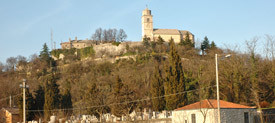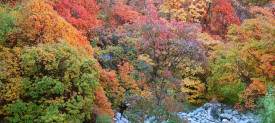Routes / KARST OF TRIESTE
REPENTABOR – NAPOLEON’S WALK – MONTE GRISA TEMPLE– GROTTA GIGANTE CAVE
The Karst is a rocky and calcareous plateau which extends from north coast of Italy till Croatia. The calcareous rocks are soluble by atmosphere that model them and cause the phenomenon carsismo (karst phenomena). The Karst is reach in caves. Some are open to the public. The most famous are Grotta Gigante, grotte di San Canziano (Slo) and le Grotte di Pustumia(SLO). On the Karst we can find many pathways that can be travelled on foot or mountain bike
Monrupino: la rocca ed il castelliere
The church and the fortress of Monrupino have a historical interest. They arose at the peak of hill and were an important shelter for the inhabitants. The first church was built around 1000. We can visit also the Karst house kept intact during time with the typical custom, the farm tools and furniture of the last century. In the last Sunday in August of odd years here celebrate the Karst marriage.
Opicina and the Napoleon’s walk
The Napoleon’s walk is a panoramic route to walk on food or to run in bicycle; it connects Opicina with Prosecco. The characteristics of the beginning of the route are vertical walls where people teach climbing. Behind the route we can see the Monte Grisa Temple. Near the Obelisco is situated a stop of the historical Tranvia di Opicina, which with a steep slope connect the centre of Trieste with the Karst plateau.
The Grotta Gigante cave
It is a touristic cave with the greatest hall in the world adorned with many concretion of calcite. The guided tour has a duration of one hour. Some found objects testify the human presence since the prehistoric period. In the 1840 began the first exploration with the hope to reach the river Timava. Only in 1890 undertook the complete exploration of the cave and later opened to the public.
USEFUL INFORMATIONS:
Duration: 3 hours
Itinerary: with car/bus
Clothing and footwear: sporty











